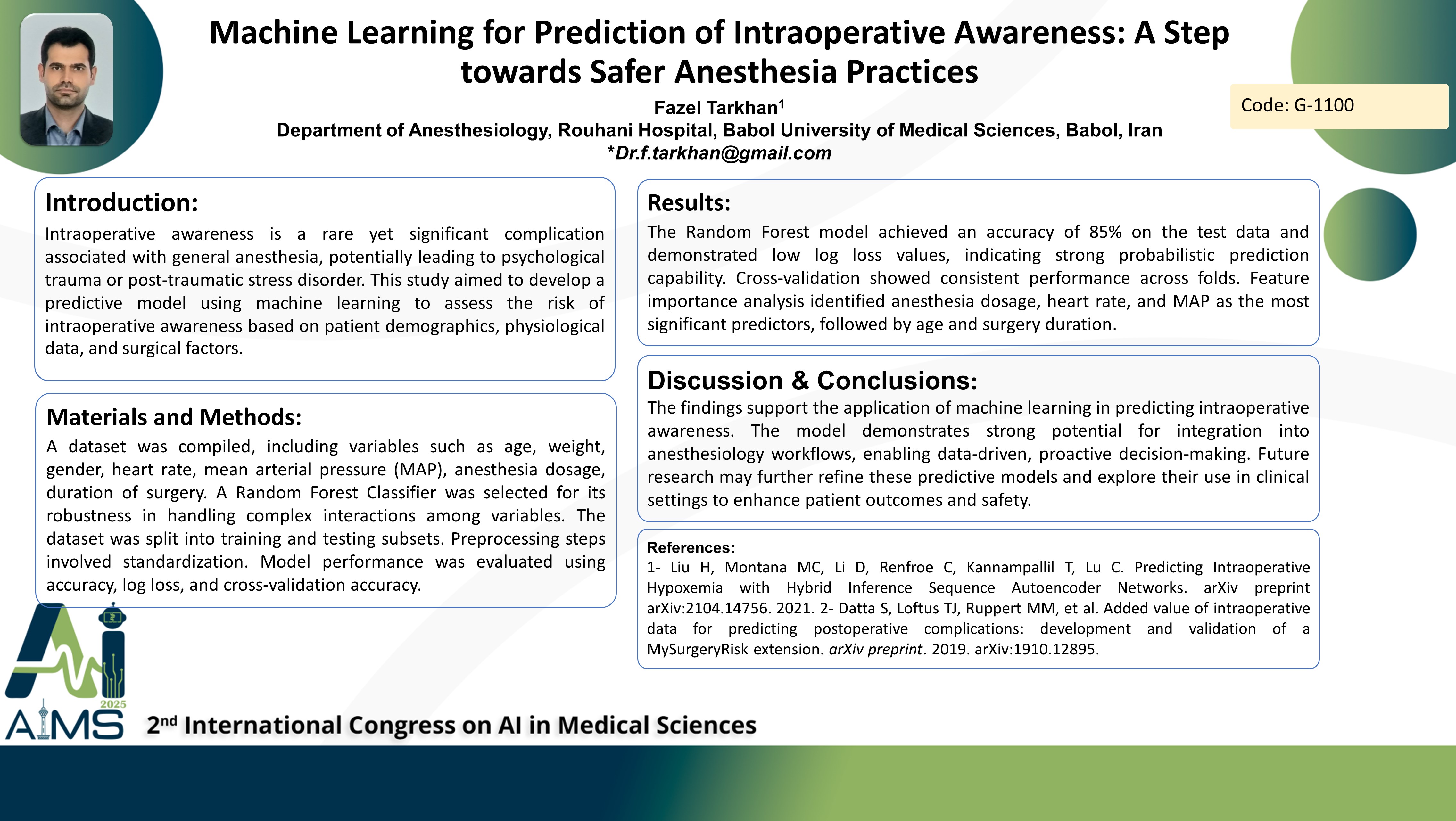Machine Learning for Prediction of Intraoperative Awareness: A Step towards Safer Anesthesia Practices
Code: G-1100
Authors: Fazel Tarkhan * ℗
Schedule: Not Scheduled!
Tag: Biomedical Signal Processing
Download: Download Poster
Abstract:
Abstract
Background and aims: Awareness intraoperative is an unusual yet serious complication of general anesthesia, resulting in psychological distress or post-traumatic stress disorder. Identification of risk for intraoperative awareness would permit proactive care by the anesthesiologist and reduce the associated risks. The purpose of this study was to examine the application of machine learning in the development of a predictive model that uses patient demographics, physiological data, and surgical factors in the prediction of intraoperative awareness. Methods: The dataset includes age, weight, gender, heart rate, mean arterial pressure-MAP, anesthesia dosage, time length of surgery, and whether the surgery was in emergency or non-emergency. The medication dosage via anesthesia is adjusted in proportion to body weight and then again adjusted in favor of elderly patients ( 60 years). Random Forest Classifier was chosen because of its ability to deal with high-order interactions among features effectively. The original dataset had been divided into a training subset and a test subset, correspondingly. Among the steps of data preprocessing included standardization. Accuracy, log loss, and cross-validation accuracy were performance metrics considered in the model. Python's scikit-learn library was used for model implementation; feature importances were visualized using matplotlib. Results: The Random Forest model had an accuracy of 85% for the test data, exhibited low log loss values indicative of reliable probabilistic forecasts, and maintained consistent cross-validation accuracy across folds. Feature importance analysis revealed that anesthesia dosage, heart rate and MAP were the most important predictors, followed by age and surgical duration. Results confirm the potential of machine learning in the prediction of intraoperative awareness. Conclusion: This study has shown that machine learning not only is feasible for predicting intraoperative awareness but it is also useful clinically. Along with improvements, integration of predictive analytics within anesthesiology workflows will revolutionize the field in patient safety and care.
Keywords
Intraoperative Awareness, Machine Learning, Random Forest
